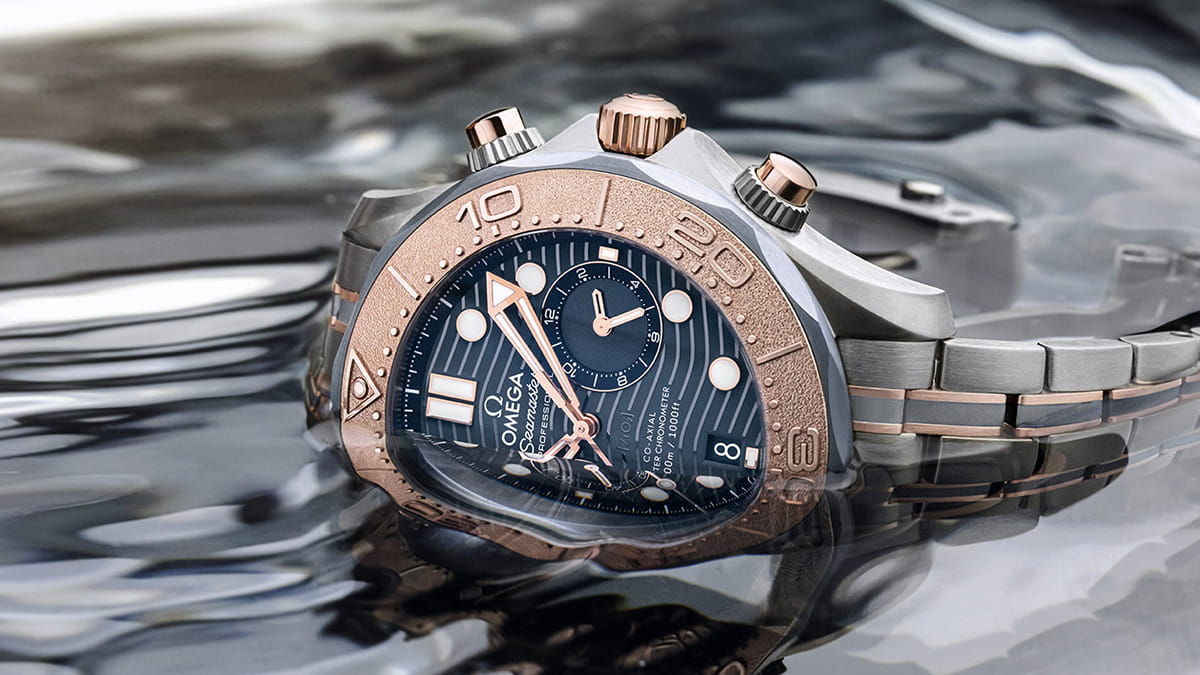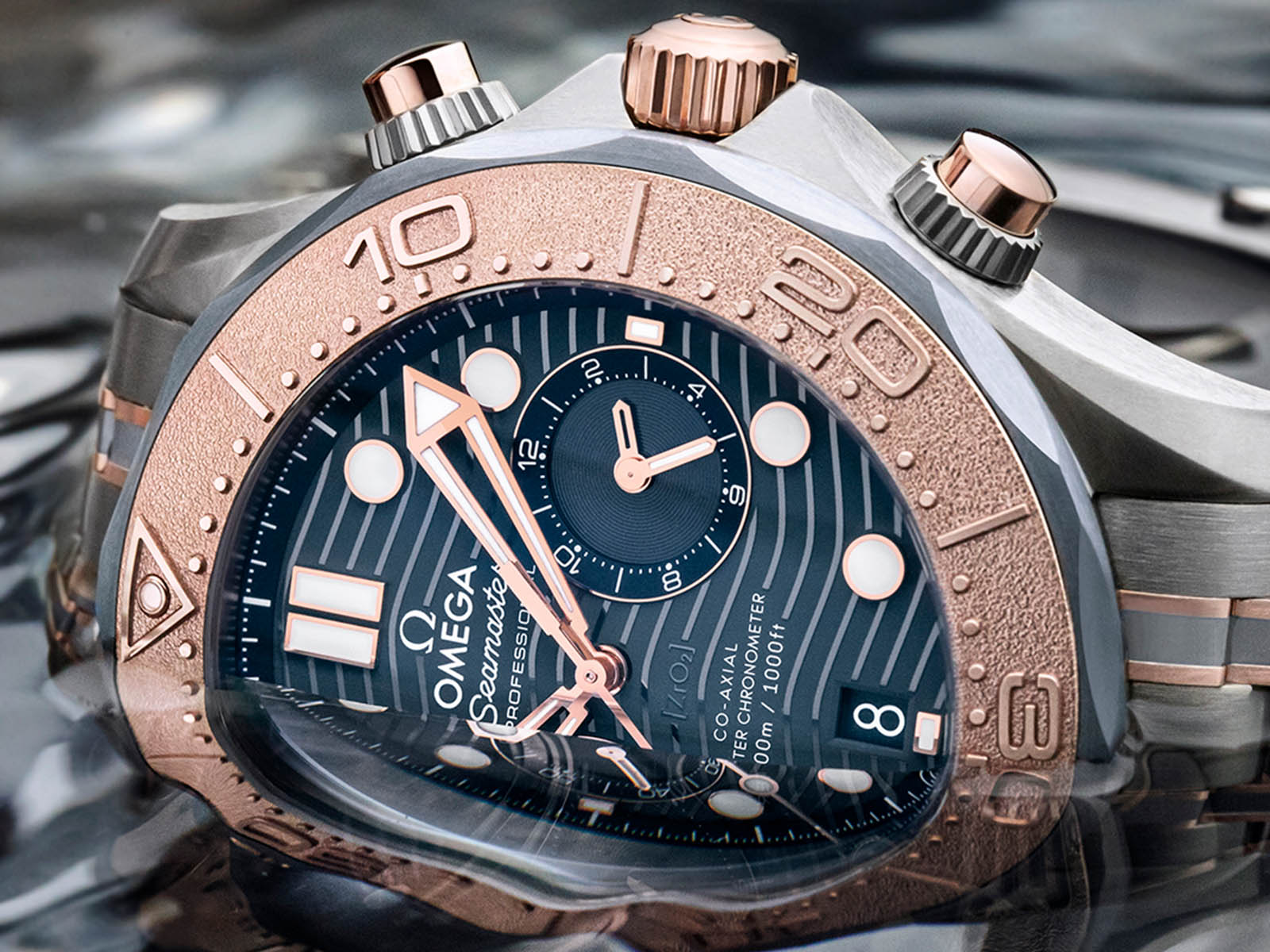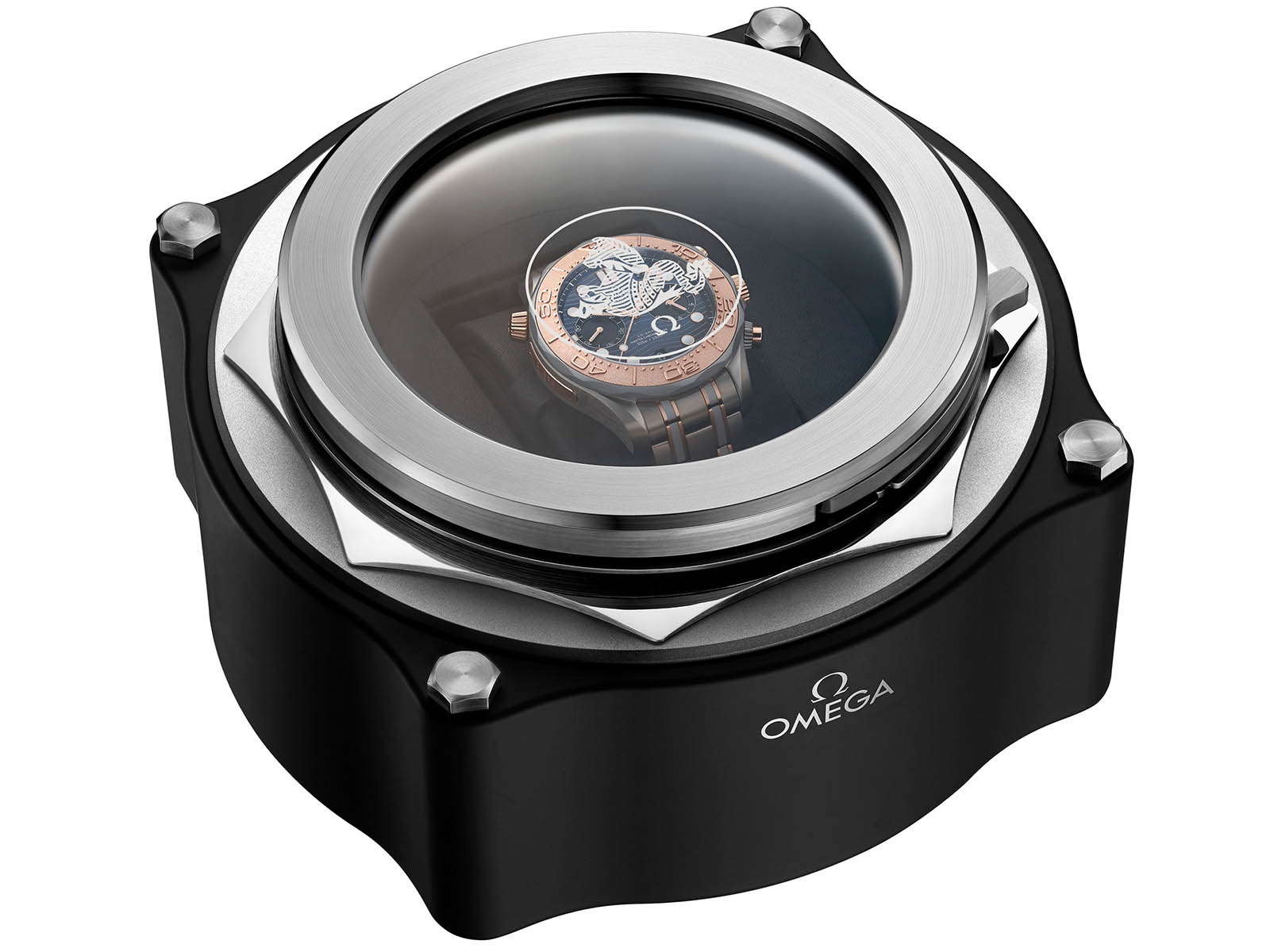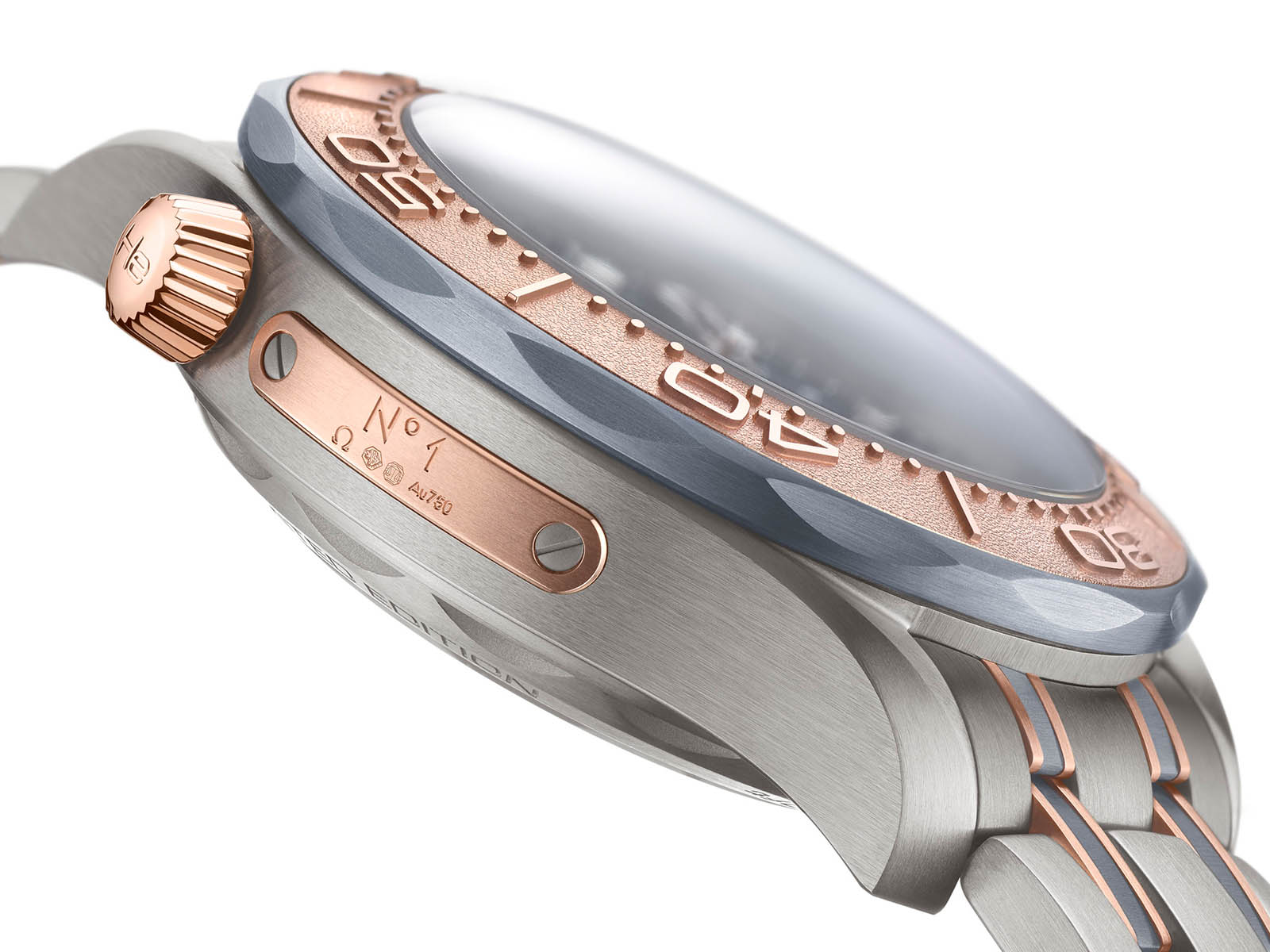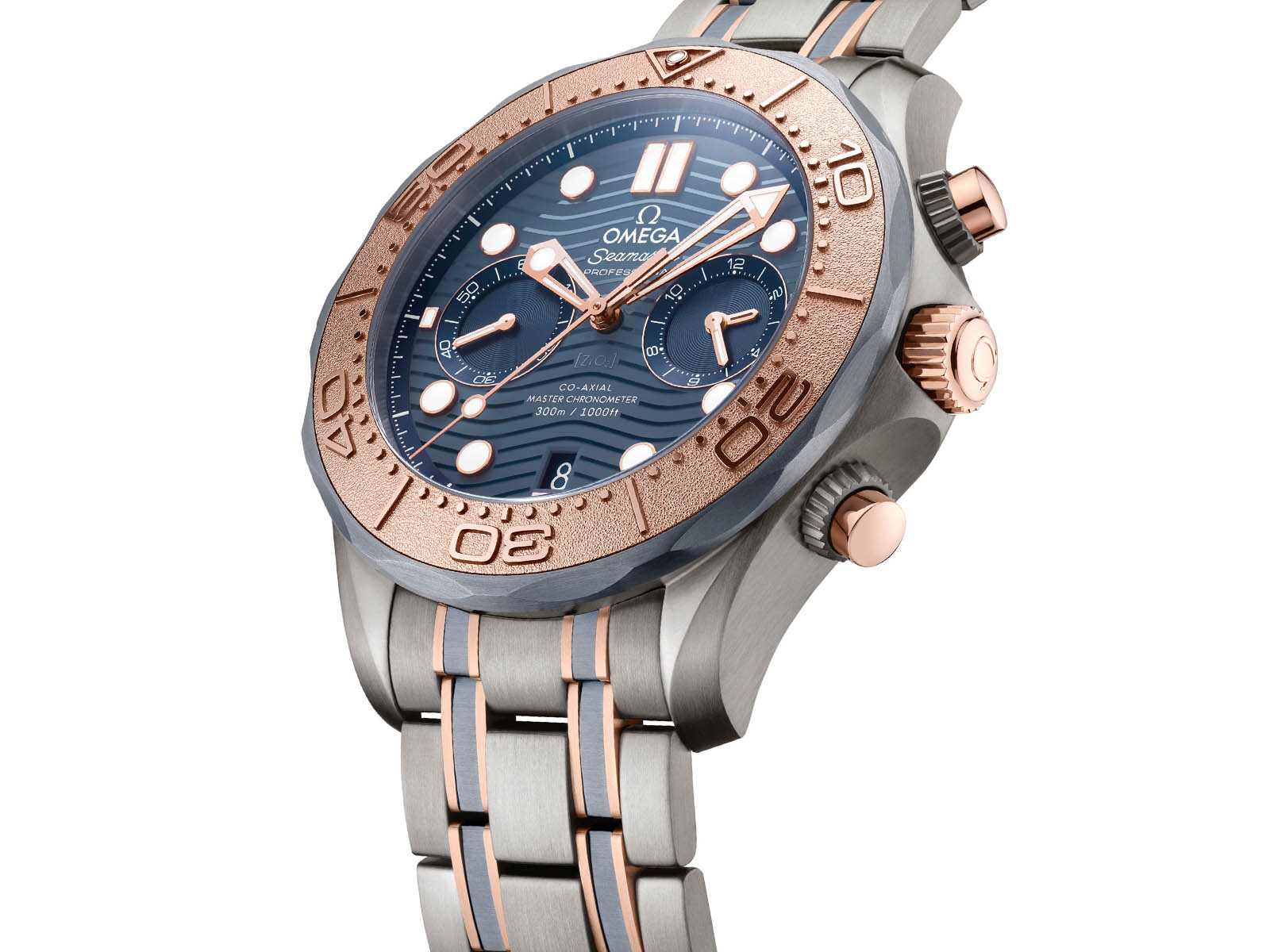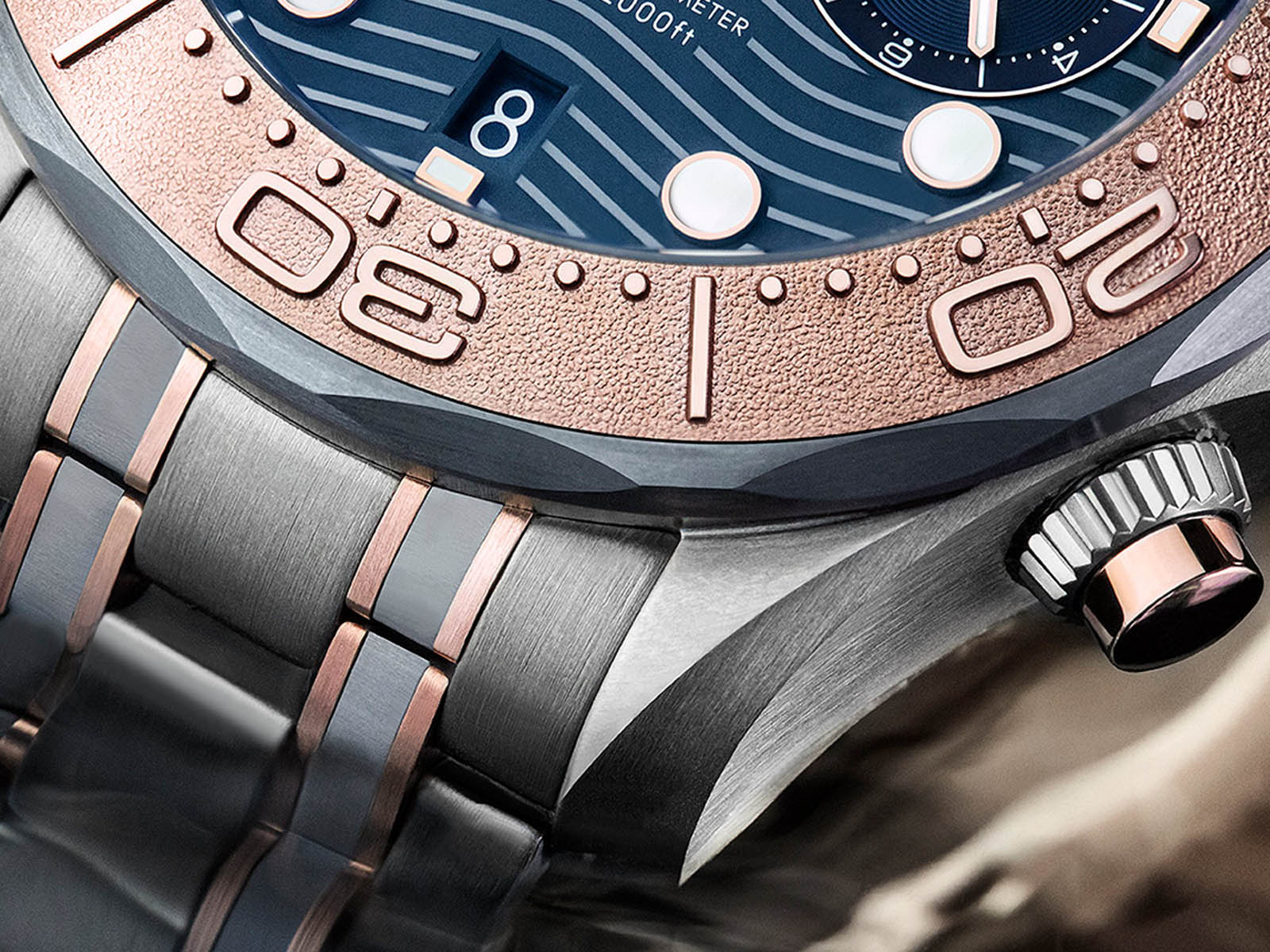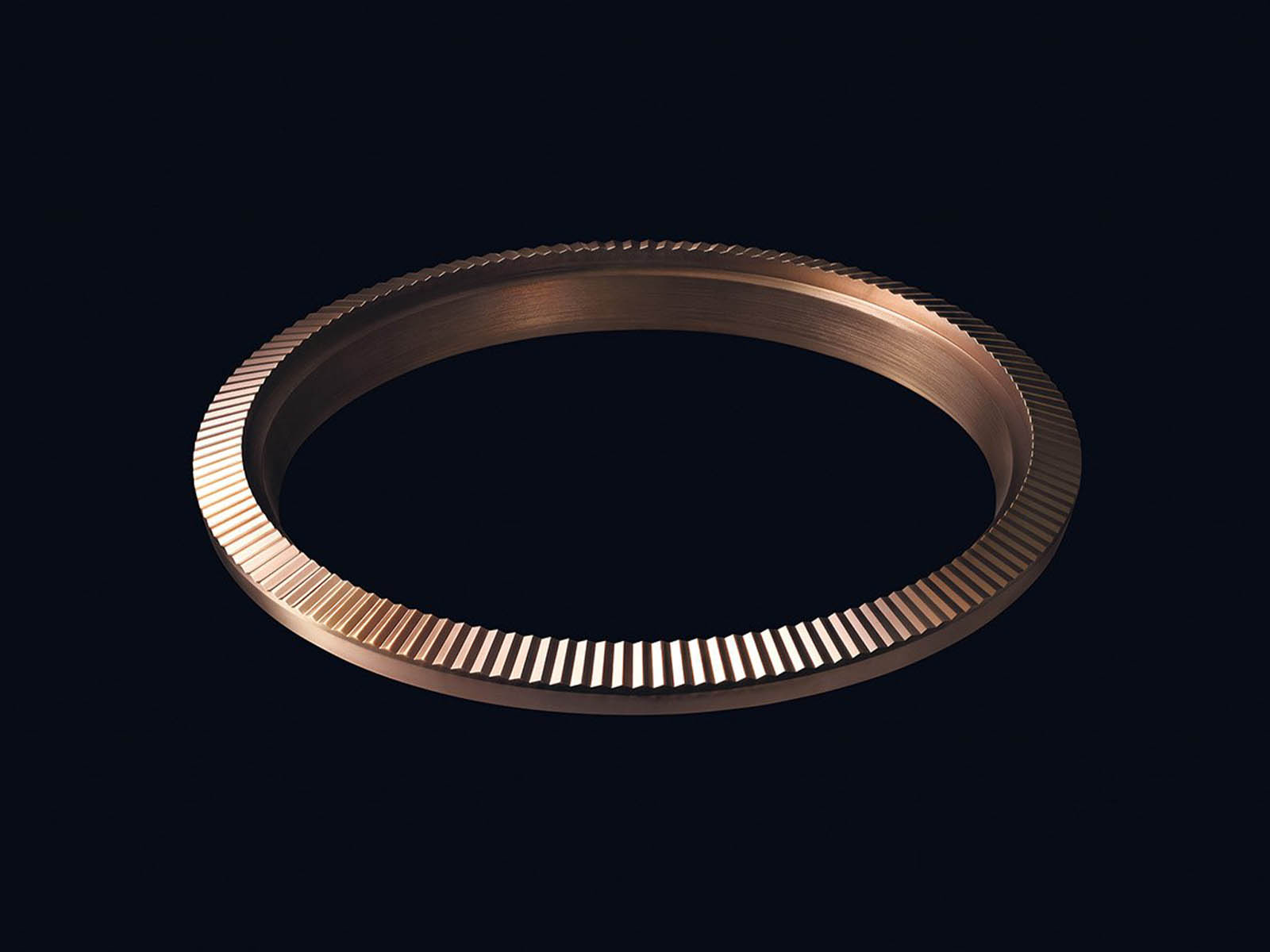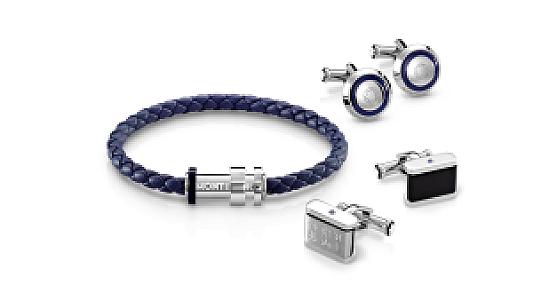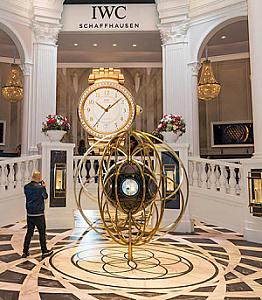The new Omega Seamaster Diver 300M Chronograph combines gold, titanium, and tantalum materials.
Introduced in 1993 and gained an important place in the history of Seamaster design, the material makes a stylish comeback this year. The striking blue / gray shades of the material create a subtle contrast with other metals that stand out in the brand's latest diving watch model.
The numbered edition of the brand, 44mm Seamaster Diver 300M Chronograph Gold Titanium, and Tantalum, is a combination of Grade 2 titanium, 18K Sedna gold, and tantalum. The model's laser-embossed diving bezel, sub-dial circles, and the plate on the side of the case with its edition number are made of 18K Sedna gold.
Seamaster's trademark laser-engraved wave pattern dial comes with polished blue ceramic [ZrO2]. The date window at 6 o'clock and the gold-touch sub-dials are in harmony with the entire design.
On the rear side, you see the white lacquered Omega seahorse laser engraved on the sapphire crystal display case back. Omega Co-Axial Master Chronometer Caliber 9900, the self-winding movement with 60 hours power reserve, is visible through the transparent case back.
For adventurers who freely experience their passion for diving, Omega also shares the brand's patented extendable-foldable extra diver extension with watch enthusiasts on each bracelet. The model, which is resistant to water pressure up to 300 meters, comes with a nice box designed as a water-resistant capsule.
Get to Know the Materials
Grade 2 Titanium
The industrialization date of titanium, which was discovered in 1794, corresponds closer to 1939. In fact, this very common material appears to be an expensive metal due to the difficulty of the weathering process. The material, which stands out with its lightness and resistance to abrasion, can withstand extreme temperatures biochemically.
Grade 2 titanium can be heat-treated, which means it gains additional strength through heat treatment. Let us add that this material has been used in models such as the Speedmaster X33 and of course many previous versions of the Seamaster Diver 300M.
Tantalum
Rarer than gold, harder than steel, highly resistant to wear. This material, which is very striking with its bright blue-gray color, is a valuable alternative to platinum with its stability. Tantalum, which is very difficult to work on, takes its name from an old story in Greek mythology that Tantalus, who was forced to stand in water at knee length as punishment, could not drink or reach the fruit on it. The story reflects the metal's ability to absorb acid when immersed in water. This resistance gives the metal additional strength and appeal.
18K Sedna Gold
The discovery of 18K Sedna gold is based on Omega's desire to improve product quality. The brand wanted to create an alloy that is more resistant to color change and reached its target in 2013. Called 18K Sedna gold, this material had a nice red-gold color and was much more resistant to color change than classical gold. An alloy blended with Omega's own rose gold, at least 75 percent gold, copper for color, and palladium for stability. The result is a reddish shade that is warm, long-lasting, and different from the rest. This material is named after Sedna, a dwarf planet in orbit that has been described as one of the reddest in the solar system.
